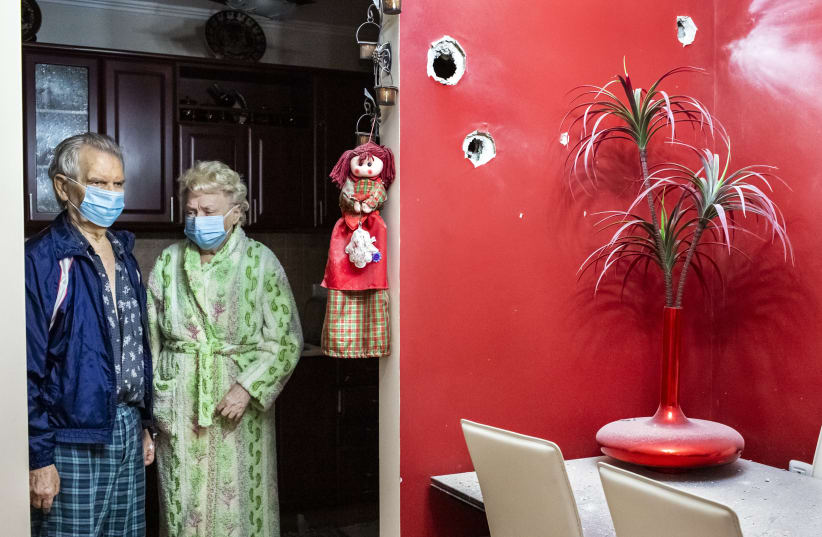The Local Testimony exhibition is, by definition, one of the most visually compelling collections of cultural artifacts around.
The event, which has been held annually at the MUZA Eretz Israel Museum in Ramat Aviv for the past 18 years, showcases some of the most eye-catching frames captured by photojournalists up and down the country, exhibited alongside spectacular scenes documented by their global counterparts in the World Press Photo spread.
A quick scan of this year’s Israeli offerings leaves you with the impression that things could be better around these parts. OK, so that’s not exactly an earth-shattering revelation but it seems to be an ongoing feature of the pictorial side of the media that disasters, violence and all manner of dystopian documentation tend to enjoy front stage berths.
“Yes, there is always a lot going on here,” surmises curator Galia Gur Zeev, who also serves as a lecturer and professional snapper herself. “That why we have Local Testimony running alongside the World Press event. Let’s say that, for example, in Switzerland, it wouldn’t work so well,” she notes with a touch of understatement. “Unfortunately, that’s the way it is here.”
Yes, they do say no news is good news, and that sad state of affairs left Gur Zeev and her fellow jurists with a mammoth task to whittle down the 7,000 odd entries, across a slew of categories, to more manageable proportions. The thematic spectrum encompasses News, Nature and Environment, Religion and Faith, Society and Community, Sport, Urbanism and Culture, and Long Exposure, with the latter comprising a series of works tailored to provide the observer with a more expansive and rounded view of the subject matter.


But it wasn’t all about violence and tragedy. The Democracy Prize, awarded by Shomrim – The Center for Media and Democracy, is designed “to promote photographers whose efforts enable us to get a better visual handle on Israeli democracy” and thereby, hopefully, give it a helping hand. The winner in that category was a delightful humorous shot by Nimrod Gluckman taken before the kickoff of a Premier League soccer match between Hapoel Haifa and Betar Jerusalem, in May. The headlining element of the event was the fact that this was the first match to be overseen by a transgender soccer referee, called Sapir Berman. In the picture, Betar skipper Idan Vered is taking a close look at Berman’s nail polish. The shot exudes bonhomie ambiance and conveys a sense of togetherness and acceptance. Not bad in a year when smile-inducing news stories were in short supply.


Of course, if we can see an image of some act of violence someone must have seen it from close enough quarters to be able to capture it so that it eventually ended up in Local Testimony. That begs the moral poser of whether the photographer should, possibly, have been doing his or her best to prevent the crime being carried out, rather than just making sure their camera lens was focused on the action.
While she is not blind to that line of thought, Gur Zeev, unsurprisingly, believes in the importance of the image and says she is full of admiration for photojournalists who go about their doggedly determined way to make sure the public can see what is going on, at various selected locations around the country. One shocker that prompts a highly pertinent question about the appropriate course of action to take in dire circumstances is Reuven Kastro’s entry to the News category which won the Curator’s Choice title. The picture shows an Arab resident of Ramla being violently attacked by Jewish rioters. This was while the Operation Guardian of the Walls IDF campaign was in full swing in Gaza, and which sparked unrest between Jews and Arabs here. “I think the photographer was doing what he was supposed to do, to bring that to the attention of the public,” Gur Zeev declares. “What I think is really shocking is that there were people standing by taking pictures of it on their cell phones.” Good point.
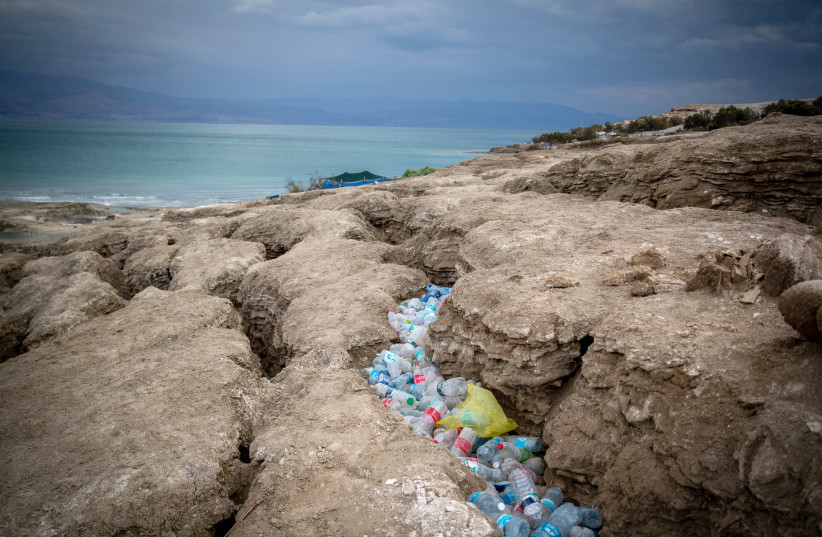

She references the iconic tragic Napalm Girl shot from the Vietnam War, which shows a pitiful young girl running away naked from an American Air Force napalm bomb attack with ominous plumes of smoke billowing in the background. Vietnamese-American photographer Nick Ut, who captured the horrific scene, later said he hoped the picture would stop the war. He won the Pulitzer Prize in 1973 for that and he also helped save the girl’s life by taking her to a hospital. Still, he got his picture and his kudos. More to the Israeli political point, the curator also mentioned the Bus 300 incident, in 1984, when Israel Prize recipient photographer Alex Levac took a picture of one of the Palestinian terrorists who attacked the bus being led away. The Shin Bet subsequently had initially claimed that all the hijackers were killed when IDF soldiers stormed the bus before the photo was taken. In the wake of the publication of Levac’s picture, they were forced to backtrack.
Sport is always a pretty good wellspring of memorable shots, and the selected pictures in this year’s category do not disappoint.
Should you find your way over to MUZA sometime between now and the exhibition closing date of January 8, and fancy taking a breather from the drama-filled disturbing images, you could do a lot of worse than spend a minute or two contemplating the aesthetics and insouciant vibes of Avishag Shaar-Yishuv’s delectable photo of judoka Raz Hershko. It should be noted that Hershko came home from last year’s Tokyo Olympics with a bronze medal. The photo was taken at the Wingate Institute and catches Hershko who, to put it mildly, is not exactly of delicate fashion model dimensions, in a moment of pure bliss leaning her ample torso to one side and beaming right across her wholesome face.
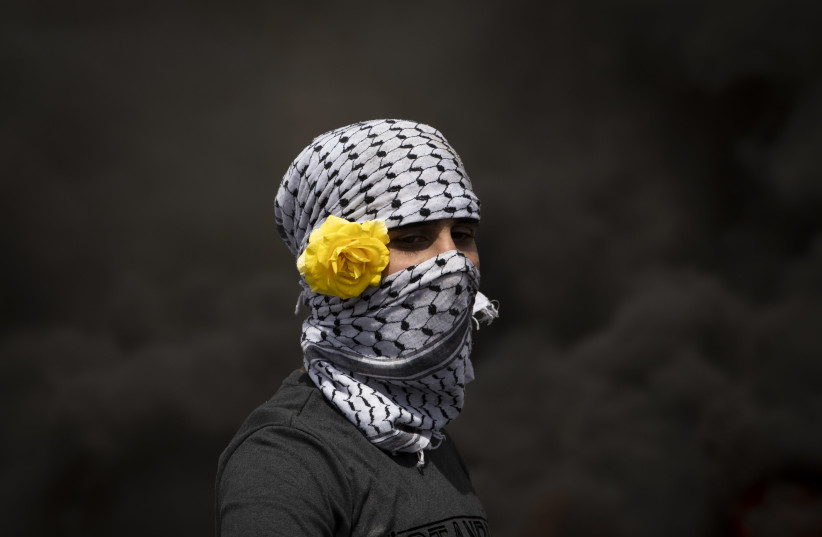

“That is a wonderful shot, and a quite special one,” says the curator. “Avishag Shaar-Yishuv didn’t take her in action; she caught her off-guard. The judoka is smiling and, I think, a little bashful. And the frame is beautifully composed, with the strata of colors behind.” The informal air is amplified by the parochial nature of the setting with a whiteboard on the wall above Hershko bearing the scrawled message referencing the countdown to the Olympic Games while a nearby poster bears the legend “Judo Makes me Strong for Life.”
THERE ARE other exhibits that are more than likely to enrich the spectator experience with a feel-good factor. Take, for example, the Curator’s Choice winner in the Religion and Faith in which Pavel Wolberg snapped a young (ultra-Orthodox) hassid full of the joys of spring and, no doubt, a drop or two of the hard stuff in Mea Shearim on Purim. The young man’s boundless joie de vivre is offset by a young mother pushing a stroller and looking a little perturbed by the antics of the frolicking character.
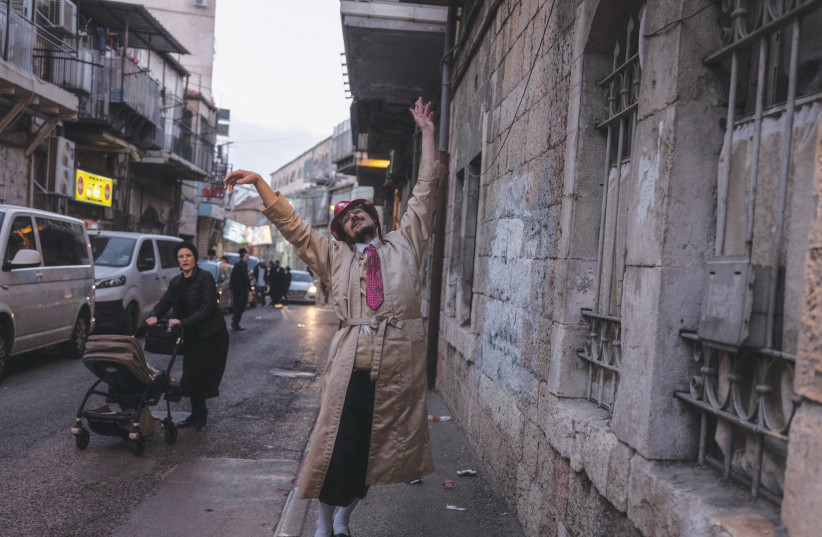

In the Sport Singles section, Gur Zeev gave her curatorial thumbs up to Yinon Fuchs’s shot of members of the Betar Nordia Jerusalem soccer youth team using corona face masks as makeshift kippot, as they attend a pre-match prayer service.
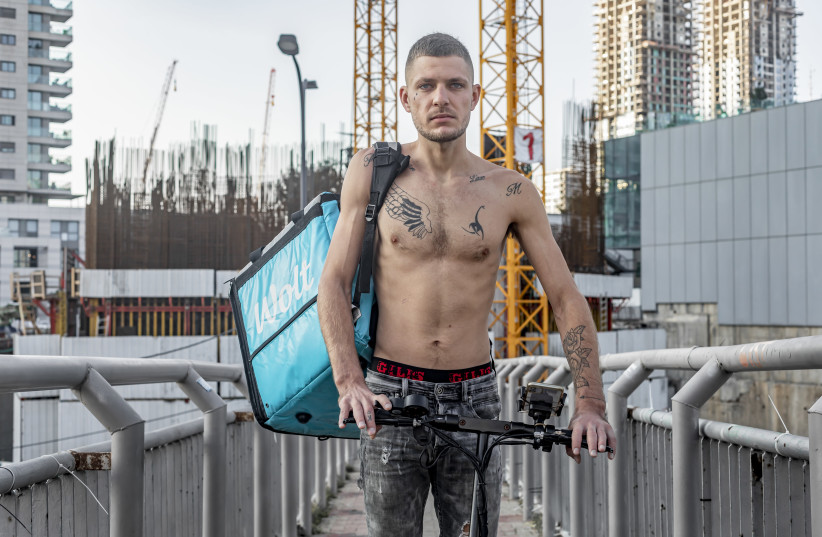

Naturally, there’s no way Local Testimony could get away from corona-related issues, even if it is the second year of the pandemic and much of the novelty aspect has dissipated. Then again, there’s nothing like doubling the dismal ante. That is front and center in the Photo of The Year. The prizewinner was taken by Natan Dvir and shows octogenarians Yitzhak and Faina Helmaizer in their home in Ashkelon in nighttime attire and wearing the customary blue face masks. The pastel colors of their clothes, and the dark dull chocolate backdrop of the kitchen cabinets, are the perfect chromatic counterbalance to the bright red lounge wall pockmarked with gaping holes following a Hamas rocket attack. “The picture is very precise and you can feel the anxiety of the couple,” says Gur Zeev. “It is also very reminiscent of a still-life style.” There is something statuesque in the characters’ postures, and their stoicism is dramatically offset by the horror you sense they must have endured during the attack.


There is also a strong sense of implied drama in the winner in the Science and Community category. Abir Sultan’s wide-angled shot shows two men undergoing a PCR test being administered by figures in full-body blue nylon uniforms. Sultan caught the testees just as they were being poked by the swabs, and none too happily. “The red wallpaper, with the frame, on the back wall looks like a frame from a movie,” Gur Zeev observes. “It looks like something out of the Soviet Union.”
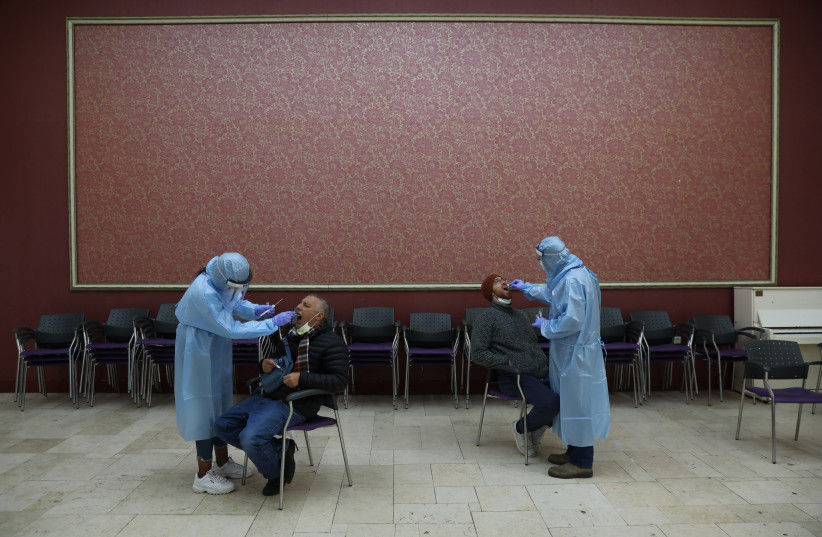

There’s more in the way of violence, lots more. One of the most moving and evocative portrayals is the third-placed entry in the News Series section in which Reuven Castelnuovo portrays the horrific tale of Naomi Perlman, a 90-year-old widowed Holocaust survivor who lived with her Indian nurse caregiver Soumya Santosh. Their Ashkelon residence took a direct hit during Operation Guardian of the Walls. Santosh was killed and Perlman sustained serious injuries. Castelnuovo triptych cleverly incorporates the use of a cell phone to show a picture of Santosh as well as Perlman’s wedding photo, surrounded by the decimated house.
As there seem to have been so many dark events over the past year or so it is difficult to recall them all – probably not such a bad thing. But it all comes flooding back, in the most dramatic and heartrending fashion, when, for example, you see Amir Levy’s emotive frame of personal belongings being gathered in the wake of the disaster at Mount Meron when 45 men and boys were crushed to death and over 100 more injured. It is impossible not to think of Auschwitz as two youths collect the victims’ spectacles.
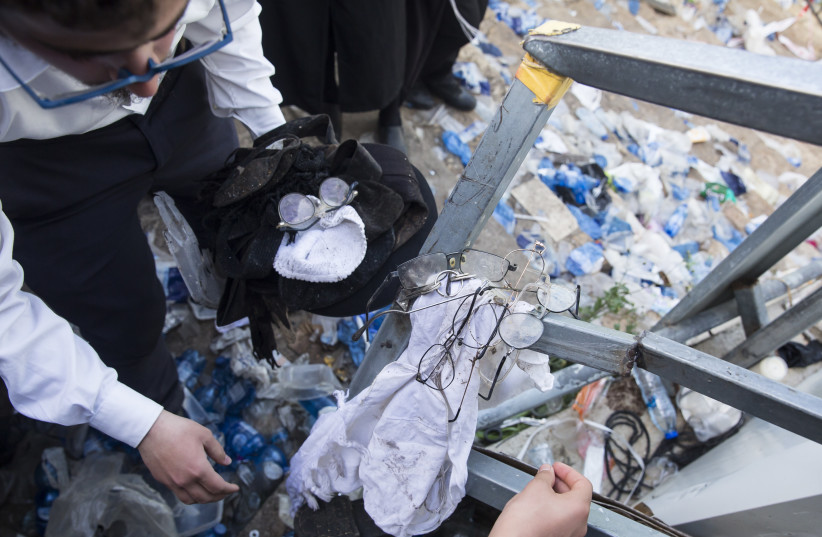

The emotional Local Testimony roller-coaster ride also takes us through jovial climes with Chaim Goldberg’s mosaic-like print of several dozen heder first-grader students attending their festive first class. Oxymoronic compositions also abound across the exhibition, possibly none more so than in Oren Ziv’s Curator’s Choice winner, in the News Singles category, which shows a group of Palestinians seated around a long table on a street in Sheikh Jarrah in east Jerusalem, tucking into their iftar meal during Ramadan. The added interest value here is some of the diners were evicted from their homes in the neighborhood by settlers and some were facing eviction. It doesn’t get much more emotionally or politically loaded than that.
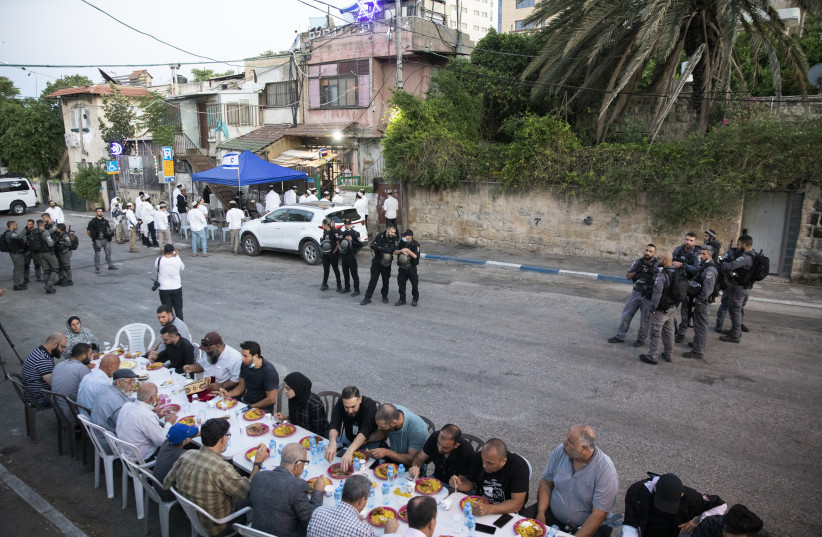

I wondered whether this ongoing exposure to such dramatic events was liable to dull the senses, both of the observer and the professional committing the images to print. Gur Zeev doesn’t think so. “The photographers work with respect for their subjects, and the subject matter,” she says. “They reflect the events that are taking place."
There’s no shortage on that score.
For more information about Local Testimony:
www.edutmekomit.co.il/open-2021 and www.eretzmuseum.org.il/
